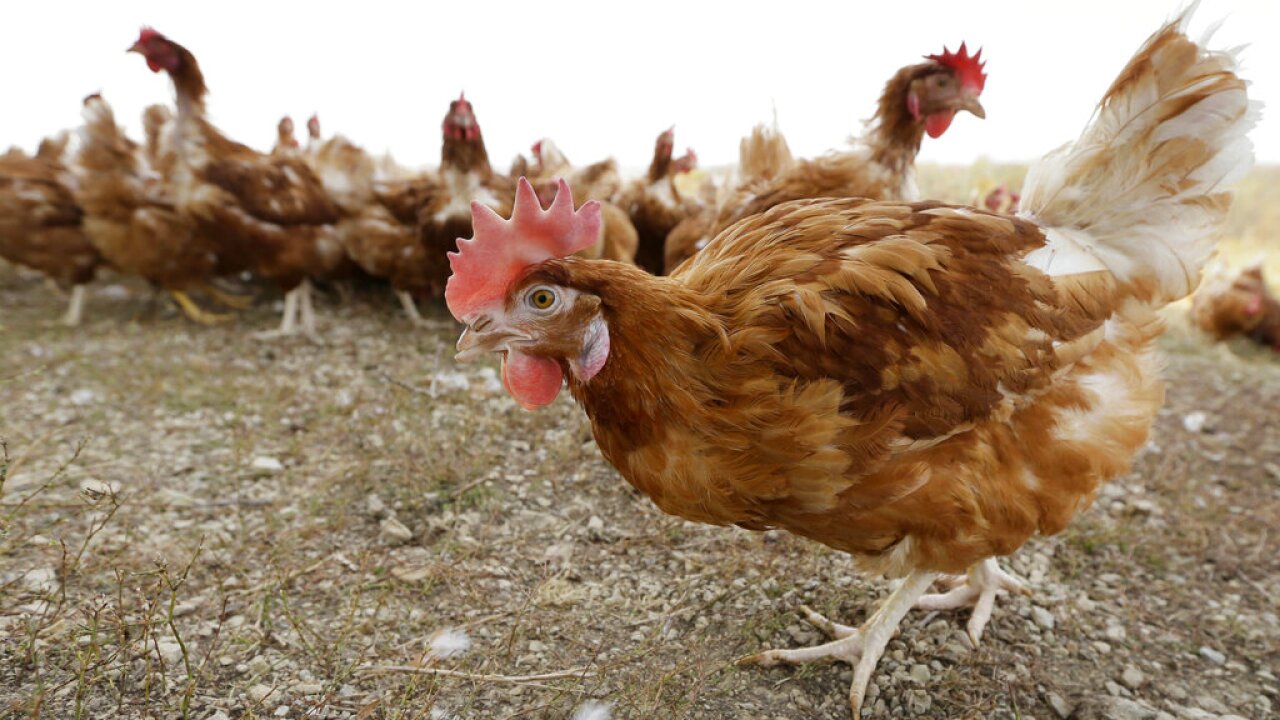GREAT FALLS — The Montana Department of Livestock said on Tuesday, April 19, it received confirmation of Highly Pathogenic Avian Influenza (HPAI) in a Glacier County flock. This is the fourth Montana flock confirmed infected and is part of a wave of HPAI infections across the country that is linked to seasonal migrations of wild birds.
The Glacier County premises reported a large number of bird mortalities in recent days. Samples from the flock were submitted to the Montana Veterinary Diagnostic Laboratory (MVDL) and tested positive for the presence of avian influenza.
Other cases in domestic poultry in Montana this year have been in Judith Basin, Cascade, and Toole Counties. This is the first time since 2015 that HPAI has been detected in Montana, when it was identified in a captive gyrfalcon and then shortly afterward in in a backyard poultry flock in Judith Basin County.
Avian influenza (AI) virus is a naturally occurring virus in birds. AI viruses are classified into two groups, based on the severity of disease they cause in infected poultry. Low pathogenic AI viruses generally cause no clinical illness, or only minor symptoms in birds. HPAI viruses are extremely infectious and fatal to poultry and some species of wild birds.
FWP hosted a virtual public meeting Friday to discuss the virus. Montana State Veterinarian Marty Zaluski said nine flocks had been tested as of Friday. Four tested positive, three tested negative, and two were awaiting test results.
Most, if not all, of a flock has to be killed once the virus is detected.
There have also been confirmed cases in wild birds. "Our confirmed positives are a snow goose from Canyon Ferry, a Canada goose near Belgrade, and a snow goose from Freeze Out Lake,” said Dr. Jennifer Ramsey with FWP.
More than two dozen states have reported cases of the virus in 2022.
Bird hunters and those who maintain bird feeders should follow these simple precautions when processing or handling wild game:
- Do not harvest or handle wild birds that are obviously sick or found dead.
- Wear disposable latex or rubber gloves while cleaning game or cleaning bird feeders.
- Do not eat, drink or smoke while cleaning game.
- People and equipment that have been in contact with wild game birds should avoid contact with back yard poultry flocks.
- Wash hands with soap and water or alcohol wipes immediately after handling game or cleaning bird feeders.
- Wash tools and work surfaces used to clean game birds with soap and water, then disinfect with a 10 percent solution of chlorine bleach—one part chlorine bleach to 10 parts water.
- Separate raw meat, and anything it touches, from cooked or ready-to-eat foods to avoid contamination.
- Cook game meat thoroughly to an internal temperature of at least 165°F.
- Wild birds don’t need supplemental feed this time of year. Taking feeders down prevents concentrations of birds that sometimes lead to disease transmission.
Although the Centers for Disease Control considers risk of HPAI spread to humans to be very low, Montanans should take precautions when handling game birds or any sick or dead bird they find. Whenever possible, avoid contact with sick or dead wildlife. Even if a bird is not suspected to have died from a contagious disease, gloves should always be worn if a dead animal must be handled for disposal.
People are encouraged to report unusual or unexplained cases of sickness and/or death of wild birds by calling their local wildlife biologist or the wildlife lab in Bozeman at 406-577-7880 or 406-577-7882. Click here for more information on the FWP website.
TRENDING ARTICLES
- 9th DUI charge for Cascade County man
- New owners for El Comedor restaurant
- Barrus sentenced for death of deputy
- 2 men charged death of Montana teen
- Casting call for “Yellowstone" TV show



